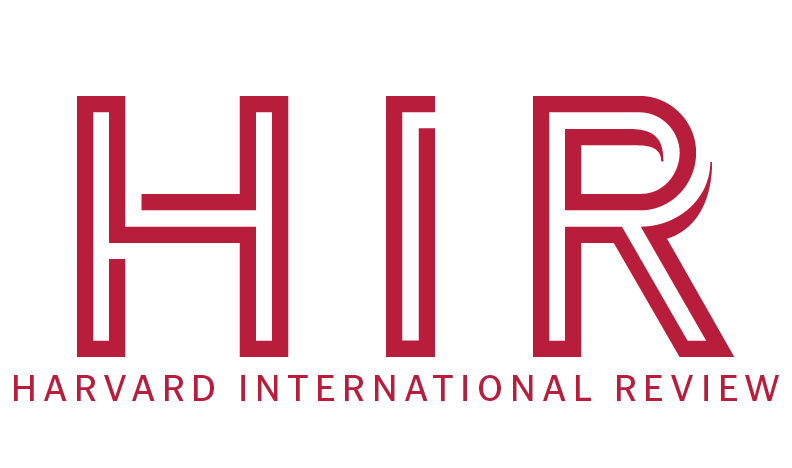2024 saw an unprecedented number of elections and over a billion people voting across the globe, and as a result, it was a year when global democracy faced renewed challenges. In 15 percent of the elections held in 2024, the defeated candidate or party rejected the outcome, and citizens protested violently in 18 percent of elections. In Latin America, the Economist Intelligence Unit’s (EIU) democracy score declined to 5.68 out of 10, with a world average of 5.23.
However, a single data point does not tell Latin America’s full story, as one country stands out as an exception to that trend: Uruguay. The country is ranked 15th globally for robust democracy, with an EIU score of 8.66. Other democracy indices back this up. The Varieties of Democracy (V-Dem) Indices gave the country a score of 0.77 out of 1. The Bertelsmann Transformation Index (BTI)—a measure of democracy in developing or transitional economies—ranks Uruguay second for governance and first for political transformation among the countries it measures. Uruguay is also 157th on the Fragile States Index, which measures a country’s vulnerability to democratic failure or collapse.
With news headlines heralding the failures of democracy in Latin America, the relative stability of Uruguay's government merits a closer look. What about Uruguay’s structure has led to success in maintaining democracy? What lessons can the country offer to the region and the rest of the world in a period where democracy is seriously under threat?
History at the Heart of Democracy
Understanding the history of Uruguayan democracy is key to understanding its present success. In 1904, the country witnessed the bloodiest civil war in its history. Out of this devastation rose reforms that set the path of Uruguay’s democracy. The President of Uruguay from 1903 to 1907 (and then again from 1911 to 1915), Jose Batlle y Ordóñez, set the standard for politics in the country, transforming the country into a democratic welfare state, creating a minimum wage, and promoting economic growth through state-run enterprises.
Beyond the 1904 coup, there was another blemish on Uruguay’s democratic history: after a period of economic turmoil, violence in the country led to military rule in 1973. However, a plebiscite rejected the military constitution, leading the armed forces to transition the country back to democracy in the 1984 elections. Another influential figure, Julio María Sanguinetti, came to power in these elections; Sanguinetti reformed the economy by helping to create the Mercado Común del Sur (MERCOSUR), a South American trade and economic bloc.
Despite the brief period of military rule (which still involved a plebiscite), Uruguay boasts the longest continuous period of democracy in Latin America. The current president of Uruguay, Yamandú Orsi, was elected on November 24, 2024. He is a left-of-center candidate, which goes against the trend of outside populist voices assuming power through recent elections. Contrary to other places, the opposing candidate, Álvaro Delgado, quickly conceded and congratulated Orsi and avoided anti-establishment stances throughout the election cycle. There was little drama in this election, with the candidates refusing to adopt extreme positions and play into an us-against-them mindset.
Structural Strengths
At first glance, Uruguay’s governmental structure does not appear radically different from many democracies across the globe, consisting of a President, a bicameral General Assembly, and a Supreme Court of Justice. One major difference, though, is the fact that Uruguay has compulsory voting. Uruguay also boasts a diverse range of political parties, representing a wide variety of viewpoints, often leading to runoff elections and supporting its open and competitive political system.
Various studies have shown the positive impact compulsory voting can have on democracy. Research from the Center for Effective Government at the University of Chicago, evaluating studies of compulsory voting across different countries, found that the policy leads to a marked increase in turnout, as well as causes the composition of the voting population to better reflect the composition of the electorate. An additional study from a professor at the University of Buffalo revealed that compulsory voting significantly reduces political polarization.
It is important to note that several other countries in Latin America have compulsory voting, suggesting that it is not the only explanation for Uruguay’s robust democracy. In fact, 13 countries across the region employ this tactic. Yet, the policy’s effectiveness is not consistent across countries. For example, in Chile, its compulsory voting has led to 25 percent of all votes cast being null or blank votes, signaling disillusionment rather than disinterest.
More political participation—and fewer political divisions—directly translates into more confidence in political institutions. In Uruguay, everyone is forced to have a role in the democracy. With this long-term investment in mind, all participants strive for moderation, emphasizing political continuity.
Uruguay is also ranked 16th on the Corruption Perceptions Index. The country is widely considered the least corrupt country in Latin America, partly due to strict anti-bribery laws that are enforced, with a unique Transparency and Public Ethics Committee aimed at curbing public sector corruption. This legal framework is supported by an independent judicial system that is key to dealing with corruption. Furthermore, Uruguay is part of the Interamerican Convention against Corruption, the United Nations Convention Against Corruption, and the United Nations Convention Against Transnational Organized Crime and the Protocols Thereto, underscoring its longstanding commitment to fighting corruption. While these conventions are partly symbolic, Uruguay’s anti-corruption laws are concrete and quite effective.
Well, It’s A Fare Deal
This relative absence of corruption allows Uruguay to offer numerous social programs to its citizens and sustain the generous welfare system set up during Batlle y Ordóñez’s administration. The country spends about 25 percent of its GDP on welfare programs, providing pensions, unemployment payments, resources for children and low-income families, and free healthcare. When these social issues are addressed, a democracy can thrive with greater levels of economic equality.
While pensions are a popular program, perhaps the most important program for stimulating democracy is Uruguay’s education system, providing cost-free learning from preschool through university. This universal, secular education has led to Uruguay’s almost 99 percent literacy rate and created an informed electorate. This helps the country’s democracy: studies demonstrate that a higher literacy rate creates a greater desire for democracy amongst a population.
In exchange for the money spent on welfare, Uruguay has maintained a strong democratic tradition. The country’s economy has enabled them to fund this welfare state. Uruguay is home to an open-market economy—with free trade and low tariffs—and it is projected to have a GDP per capita of roughly US$24,000—compared to the average of US$10,000 in South America. Its GDP is projected to grow by 2.7 percent in 2025, compared to a regional average of 2.5 percent.
This is not to argue that Uruguay has the largest or most successful economy in Latin America; rather, they have a stable economy that has allowed for democracy to continue to be built up. This is a cycle, since increased democracy often sees higher GDP, creating a positive feedback loop. It is worth noting, however, that Uruguay has been dealing with economic stagnation and a slight decline in GDP—due to COVID and drought that impacted crops—but the country’s economy now seems to be on a stronger path. This is mainly due to Uruguay’s solid institutions; prudent financial management has allowed the country to recover, as well as improvements in the labor market.
Uruguay in a Regional Context
These structural advantages Uruguay boasts are glaringly different from other countries in Latin America that often dominate the headlines. In Brazil, Jair Bolsonaro attacked institutions like Brazil’s Supreme Court, a striking difference from Uruguayan faith in key components of government. Structurally, Brazil has a constitutional amendment that allows any case an appeal to the Supreme Court, slowing down the justice system immensely even though it was initially added to reform the court system. In Mexico, former president Andrés Manuel López Obrador also manipulated the Supreme Court to serve his political needs, which goes all the way back to the flaws of Mexico’s 1917 Constitution—in which extensive power was granted to the executive.
Unlike Uruguay, corruption is still a major issue for most countries in the region. Brazil’s Operation Car Wash is perhaps the most infamous example; the investigation began with a simple money laundering scheme at a car wash but ended up exposing a wide net of political corruption involving politicians, judges, and the state-run oil company Petrobras. Without a history of strong institutions to build on, Latin American countries slide into corruption. It has also been theorized that corruption is more prevalent in former colonies with a long history of government intervention in the economy.
Another major difference between Uruguay and other countries in the region includes relative political stability. For example, between 2016 and 2022, Peru had seven different presidents; Uruguay had two. In a region where the press is often highly restricted, Uruguay exhibits a strong commitment to civil liberties and equality, even mandating 30 percent of their legislative representatives be women. Uruguay’s stability allows for predictability and long-term governance, and inclusive representatives promote both diverse perspectives and increase social inclusion across the country.
Lessons for Latin America—And The World
Uruguay is by no means a perfect example of democracy. Although its economy is stable, it is not completely successful, with high prices compared to the rest of Latin America, and has also seen a worryingly high crime rate in recent years. Another drawback of using Uruguay as a model for governance is its small population size, as it is much easier to maintain a steady democracy with approximately 3.4 million people.
These drawbacks do not diminish the guiding principles Uruguay offers. First, compulsory voting demands political engagement. Second, extremely low corruption enhances confidence in public institutions. Third, welfare programs and respect for civil liberties are key to enhancing democracy. Finally, a strong economy is necessary to prevent political turmoil.
Uruguay’s history is certainly key to the success of their democracy today, but it is their commitment to their founding ideals that has led them to real success. For the moment, it is a beacon of hope in a democratic world that is severely shaken. It is a country where, alongside the current president, two former presidents can attend the inauguration of Brazil’s president, arm in arm.





